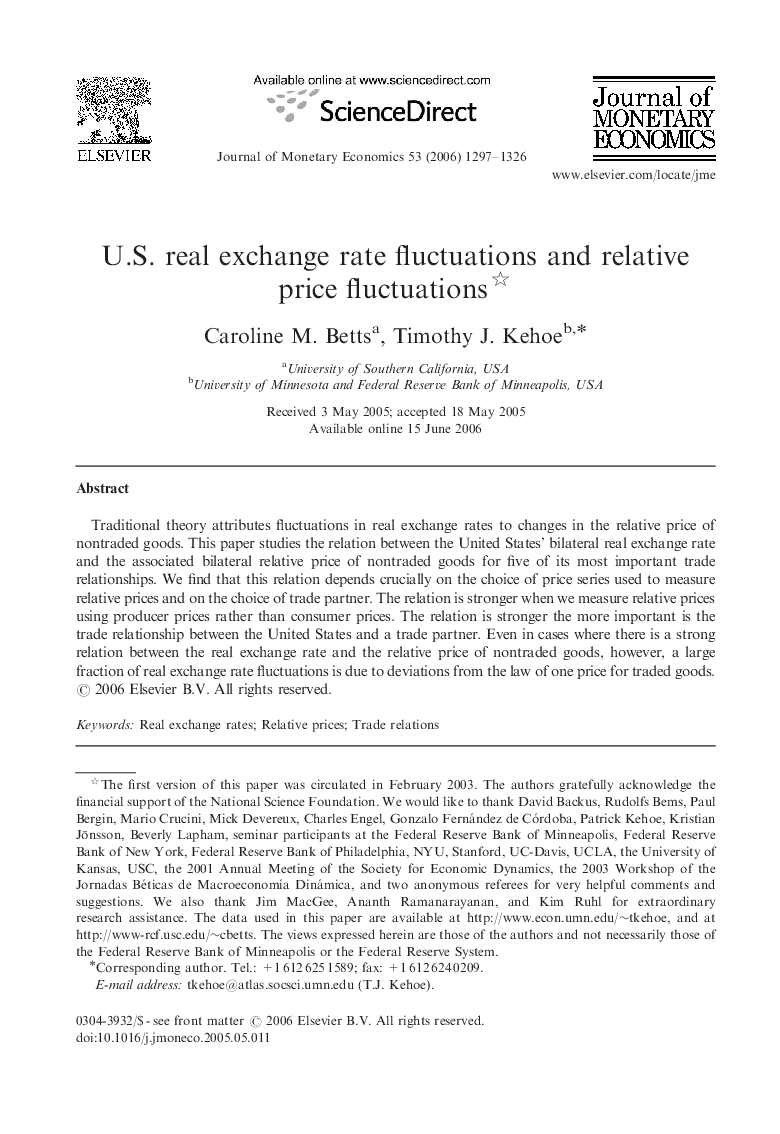| Article ID | Journal | Published Year | Pages | File Type |
|---|---|---|---|---|
| 967261 | Journal of Monetary Economics | 2006 | 30 Pages |
Abstract
Traditional theory attributes fluctuations in real exchange rates to changes in the relative price of nontraded goods. This paper studies the relation between the United States' bilateral real exchange rate and the associated bilateral relative price of nontraded goods for five of its most important trade relationships. We find that this relation depends crucially on the choice of price series used to measure relative prices and on the choice of trade partner. The relation is stronger when we measure relative prices using producer prices rather than consumer prices. The relation is stronger the more important is the trade relationship between the United States and a trade partner. Even in cases where there is a strong relation between the real exchange rate and the relative price of nontraded goods, however, a large fraction of real exchange rate fluctuations is due to deviations from the law of one price for traded goods.
Keywords
Related Topics
Social Sciences and Humanities
Economics, Econometrics and Finance
Economics and Econometrics
Authors
Caroline M. Betts, Timothy J. Kehoe,
